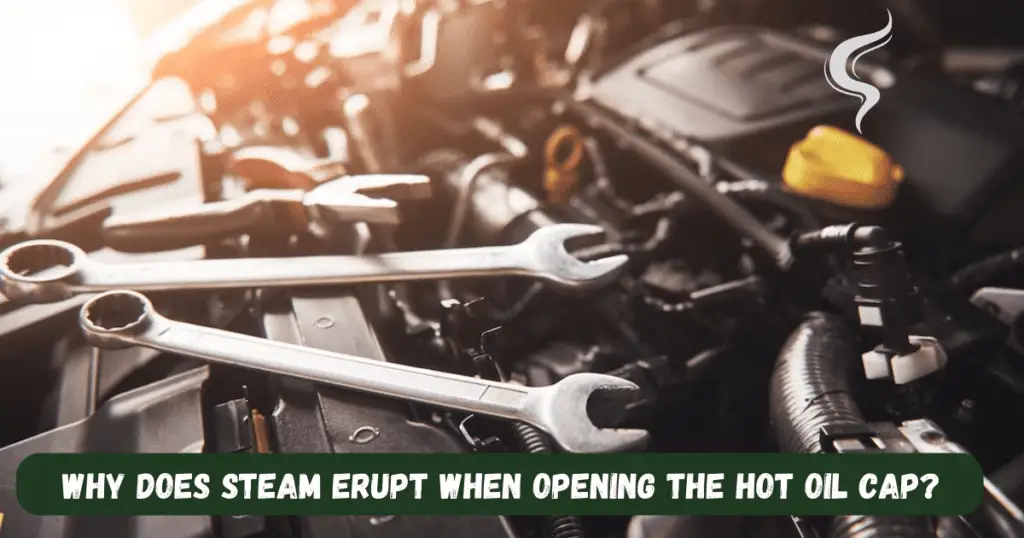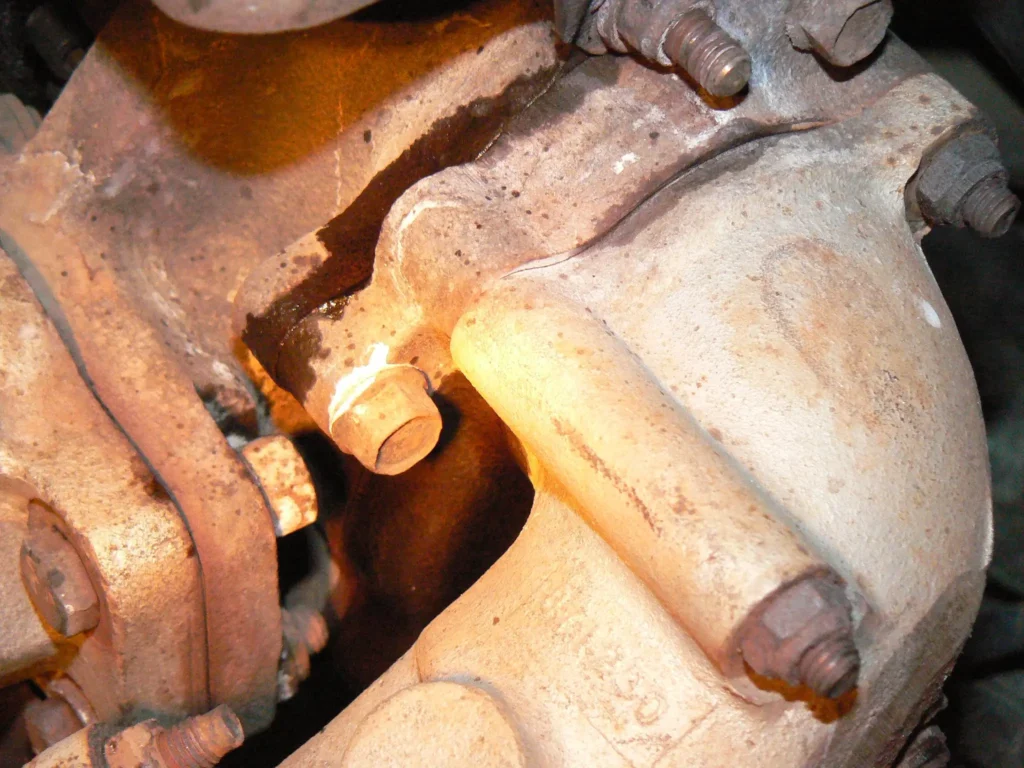Open the oil cap when the engine is hot. That ominous plume of steam erupting from your oil-filled hole as you unscrew the cap is startling. While our first instinct is to immediately top off low oil, is checking and adding oil safe on a hot engine? This article covers whether opening the oil cap on a hot engine damages anything when you should let it cool first, and how to top off oil properly.
It’s a familiar scene – your oil light comes on but you’re miles from the nearest gas station. Against your better judgment, you decide to forge ahead and pop the hood to top off the dipstick showing the oil low. But clouds of steam give you pause as you reach for the cap after cutting the hot engine. Should you proceed or wait to Open the Oil Cap When the Engine Is Hot?
Here’s a look at what’s happening inside the engine and whether checking and adding oil to a hot running motor invites damage or risks.
Why Does Steam Erupt When Opening the Hot Oil Cap?
That sudden plume of engine steam when removing the oil cap on a hot engine startles many drivers. But what’s happening is:

Oil Vapor and Blow by Buildup
As the engine runs, oil vapor, combustion blow-by gases, and moisture accumulate inside the engine’s crankcase and valve covers.
Pressurization
The churning components heat and pressurize the accumulated gasses and steam inside the upper engine over time.
Release Point
Removing the oil cap creates an escape path for the built-up temperature and pressure to rapidly release.
So the steamy eruption is simply venting of typical hot engine vapors and blowing by, not anything catastrophic. But can it invite damage? Let’s look closer.
Does Opening the Cap on a Hot Engine Harm Anything?
Generally, briefly opening the cap to check oil on a fully warmed engine won’t directly damage components, but risks include:
- Hot oil spewing out if filled too high
- Steam burns from venting pressurization
- Debris dropped into the fill hole before capping
So while the venting itself is harmless, take care when opening any hot engine compartment to avoid mishaps. Use protection and caution reaching in.
Should You Let the Engine Cool Before Opening the Cap?
To avoid risks and get an accurate reading, it’s ideal to wait for the engine to cool before removing the oil cap:
- Steam venting dissipates completely upon cooling
- Oil level stabilizes after return to ambient temperatures
- No risk of contact burns from hot components
- Pressurization releases naturally as the Oilengine cools
Unless it’s an urgent situation, it’s safest to wait until cool enough to touch before removing the oil cap or filling.
Adding Oil to Hot Engines – Proceed with Caution
Protect Yourself from Burns
When topping off oil on a hot engine, always wear eye and hand protection. Gloves and safety glasses prevent burns fromOil steam or contact with scorching components. Avoid leaning directly over the open filler cap as well.
Allow the Cap to Vent
Open the oil cap slowly to let the pressure release gradually. This prevents hot oil from erupting outward when the cap is removed. Point the cap away from yourself and give it space to vent.
Check Levels Before Topping Off
After letting the oil settle and stabilize, recheck the dipstick level before adding more oil. The reading may have changed once cooled and depressurized. Avoid overfilling based on a faulty hot engine reading.
Add Oil Gradually
Pour in only small amounts of oil at a time. Keep rechecking the dipstick frequently to ensure you don’t overfill the crankcase. It’s easy to add too much when hot oil distorts the reading.
Use Proper Viscosity
Always ensure the new oil meets OEM specifications for viscosity and rating. Putting in the wrong oil can cause major issues. Double-check bottles when topping off hot oil.
Frequently Asked Questions
Can you open the oil when the car is hot?
It’s not generally recommended, but an Open Oil Cap When the Engine Is Hot to check the level won’t directly damage most modern engines. Still, it’s ideal to allow full cooling first.
How long should you let your engine cool before opening the oil cap?
Allow 30-60 minutes minimum after driving for all components to cool back near ambient temperatures before opening the pressurized oil cap.
Do I need to let the engine cool before adding oil?
Yes, it’s best to allow full cooling before adding oil to get an accurate dipstick reading and avoid the risks associated with reaching near-hot components like steam.
Do you check the oil when the engine is hot or cold?
Oil should be checked only when an engine is fully cool and has sat for several minutes. Hot idle checks are ineffective as oil has expanded across components giving inaccurate level readings.
Does your oil tank smoke when you open the cap?
Steam vapor normally comes out when opening the cap on a hot pressurized engine. But smoke likely means oil drips contacting hot exhaust components or an internal issue like bad valve stem seals.
Is it safe to open the coolant cap when hot?
No, never open the pressurized hot coolant radiator cap. Escaping high-temperature steam can cause severe burns. Only check the coolant level when completely cooled down.
What happens when you overfill oil?
Typical results of overfilling oil include leaks, fouled spark plugs, oil aeration/foaming, blue exhaust smoke, reduced engine performance, increased operational temperature, and excessive oil consumption.
How often should I change my oil?
Most manufacturers recommend changing engine oil every 5,000-10,000 miles or 6-12 months. Severe duty or turbocharged engines may need changes more frequently like every 3,000-5,000 miles.
What color should engine oil be?
Optimal oil is a transparent brown/amber color. Dark oil indicates old degraded fluid needing change. Milky or gray oil points to fuel or coolant contamination requiring diagnosis.
Conclusion
A face full of venting steam may be unpleasant, but briefly opening the oil cap on a hot pressurized engine won’t directly damage most modern well-maintained motors. The risks come from contact burns or careless fluid additions once opened. Allow proper cooling when possible, and add oil carefully when necessary on a hot engine.
With knowledge and precaution, you can check and replenish oil safely to limp through a light warning. For more information about Can You Open Oil Cap When Engine Is Hot? Check this article Can You Add Oil To A Hot Engine? Should You Let It Cool?

